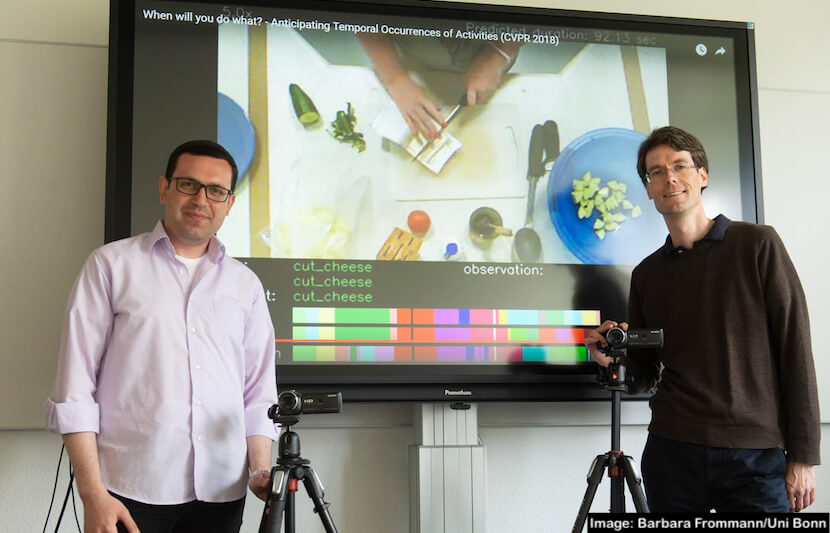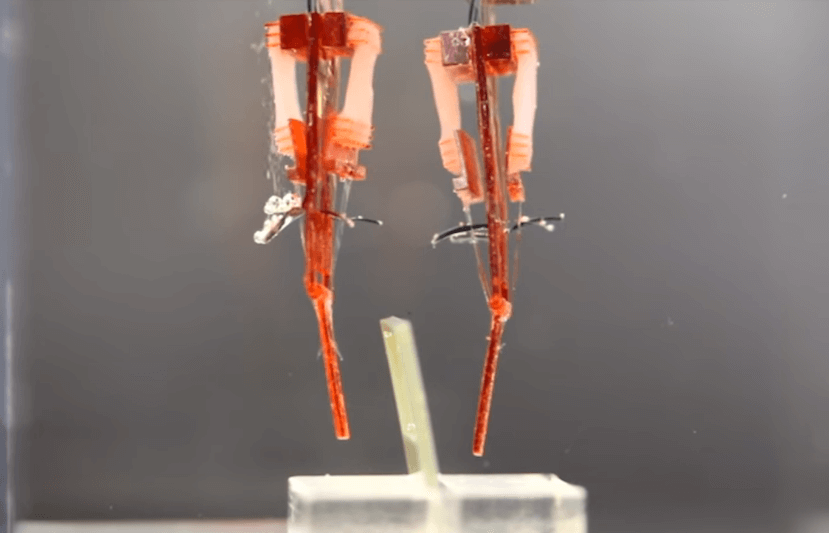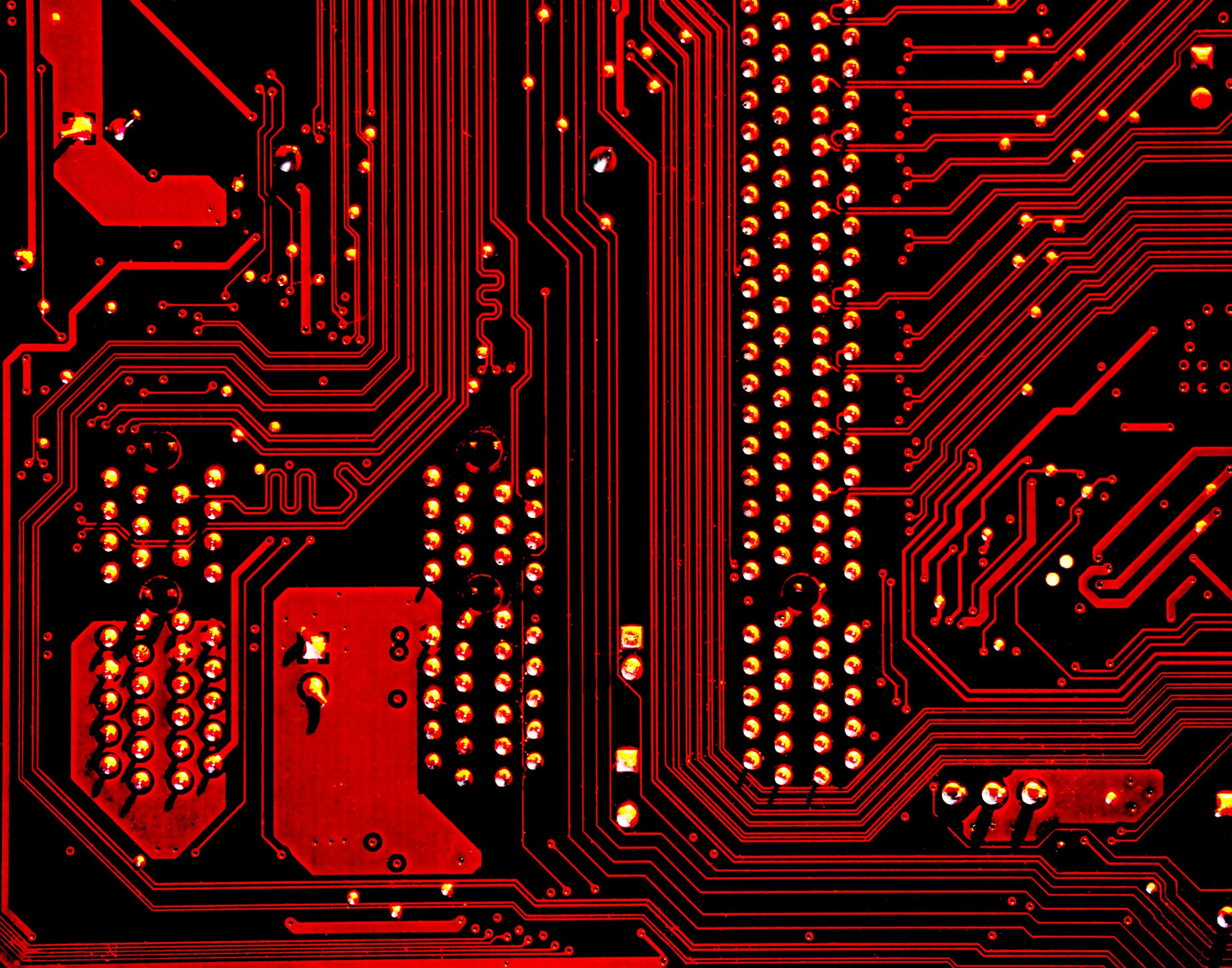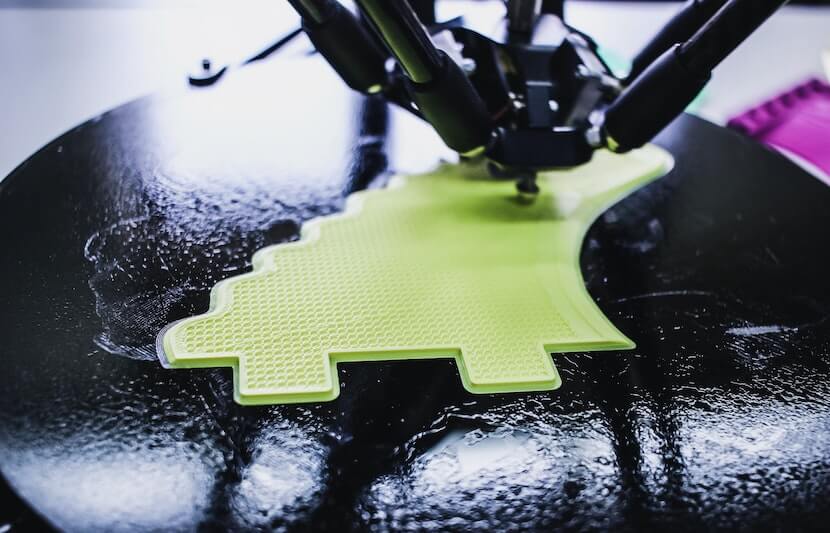-
Computer Program Can See 5 Minutes Into the Future
Computer scientists from the University of Bonn in Germany have developed a self-learning computer program that can look several minutes into the future. This development will enable robots to anticipate the actions of humans, allowing machines to work side by side with people. “If the action a robot should do depends on the action… Read More
-
Scientists Create Real-Life Cyborg with Living Muscle
While a half-man, half-robot might seem like the epitome of science fiction, it’s a developing reality to a team of researchers at the University of Tokyo. The team has created a method to successfully grow and integrate living muscle into a robotic skeleton that can function for over a week. The result is a human-like… Read More
-
A Human-Like 3D-Printed Smart Gel That Can Operate Underwater
A team of engineers from Rutgers University–New Brunswick has created a human-like 3D-printed smart gel that can walk underwater as well as grab and move objects. This new technology could lead to the development of soft robots that can mimic an octopus’s ability to walk underwater and bump into things without causing damage. In addition,… Read More
-
AI Predicts Risk of School Violence
In a recent pilot study, researchers from the Cincinnati Children’s Hospital Medical Center (CCHMC) have demonstrated artificial intelligence as a useful tool in predicting which students are more likely to perpetrate school violence. The researchers determined that machine learning is as accurate as a team of child, adolescent and forensic psychiatrists in determining a young… Read More
-
AI Can Now Decode Animal Behavior. What Does It Mean for Our Future?
Up until now, biologists studying animal behavior have been restricted to human observation. But scientists at Columbia University have now come up with an easier method. They have developed an innovative algorithm that can be used to study animal behaviors. Led by Rafael Yuste, a neuroscientist at Columbia and a member of Columbia’s Data Science… Read More
-
Envisioning On-Skin 3D Printing Tool As ‘Swiss Army Knife’ of the Future
A team of researchers from the University of Minnesota has developed a technology to print custom electronics and cells directly onto the skin using a portable and lightweight 3D printer that costs less than $400. The new technology is a potential breakthrough in both 3D printing and wearable electronics, and could be applied in a… Read More
-
Can Walls Be Smart, Really?
The walls around us everywhere don’t merit much thought, usually. But our run-of-the-mill walls will no longer serve merely as a room divider, not if a team of researchers from Carnegie Mellon University (CMU) and Disney Research has anything to do with it. The researchers have figured out a way to convert ordinary walls into… Read More
-
New Algorithm Leads Tt Breakdancing, Acrobatic Simulated Characters
A team of researchers from the University of California, Berkeley and the University of British Columbia in Canada has developed an algorithm to re-create natural motions in computer animation. Traditional computer-simulated motions are seen as clumsy and rhythmless, often failing at mimicking a human’s natural motions. Disappointed by old techniques, the team was inspired to… Read More
-
What if Smartphone Charge Can Last 3-5 Times Longer?
A team of researchers from the Erik Jonsson School of Engineering and Computer Science at the University of Texas, Dallas (UTD) and the University of North Texas has developed an environmentally safe, higher-power battery substitute that could lengthen battery life up to five times longer. Most smartphones and electronics use lithium-ion batteries, a type of… Read More
-
Ancient Paper Art to Spur Development of Smart Clothing
Inspired by the ancient Japanese paper art of kirigami, a team of researchers from the University at Buffalo (UB) has developed a method to create flexible electronic materials made of polymers and nanowires. This new technique could lead to improvements in smart clothing, bendable display screens, electronic paper, and other applications that require malleable circuitry.… Read More
-
Device Decodes Body Language Using Infrared Light
A team of researchers from the University of Cambridge and Dartmouth College has developed a new device that uses infrared light to monitor how body language impacts social interactions. Because body language influences many aspects of people’s lives, including job interviews, doctor-patient conversations and group projects, many people have tried to study them through video… Read More
-
Seeing the Invisible with Stanford’s Laser-Based Imaging Technique
A team of researchers from Stanford University has developed a laser-based imaging technique that makes it possible to see objects hidden around corners. The researchers are currently focused on applying this technique to self-driving cars, some of which are already capable of sensing what’s around the car, but there are other applications, such as seeing… Read More
-
Acoustic Tractor Beam Opens Door to Levitating Humans
Researchers from the Department of Mechanical Engineering at the University of Bristol, UK, have developed an acoustic tractor beam that’s so powerful that it could lead to the levitation of drug capsules or micro-surgical implements within the body and even humans. They believe it’s the “world’s most powerful acoustic tractor beam.” The study is published… Read More
-
Trash-Talking AI Could Help Humans Get Along with Each Other
Brigham Young University computer science professors Jacob Crandall and Michael Goodrich, along with a team of researchers from MIT and other international universities, have created an algorithm that enables machines to compromise and cooperate instead of compete. The researchers are hoping that through their study they can improve the way humans interact with each other.… Read More
-
Computer Vision-Motor Tests Predict Baseball Batting Ability
A team of researchers from Duke Health has sharpened a digital method to test vision, sensory, and motor skills in baseball batters. The computer testing could serve as a new tool for baseball scouts in assessing a player’s skills, or for developing training programs to improve performance on the field. Duke Health is a research… Read More
















